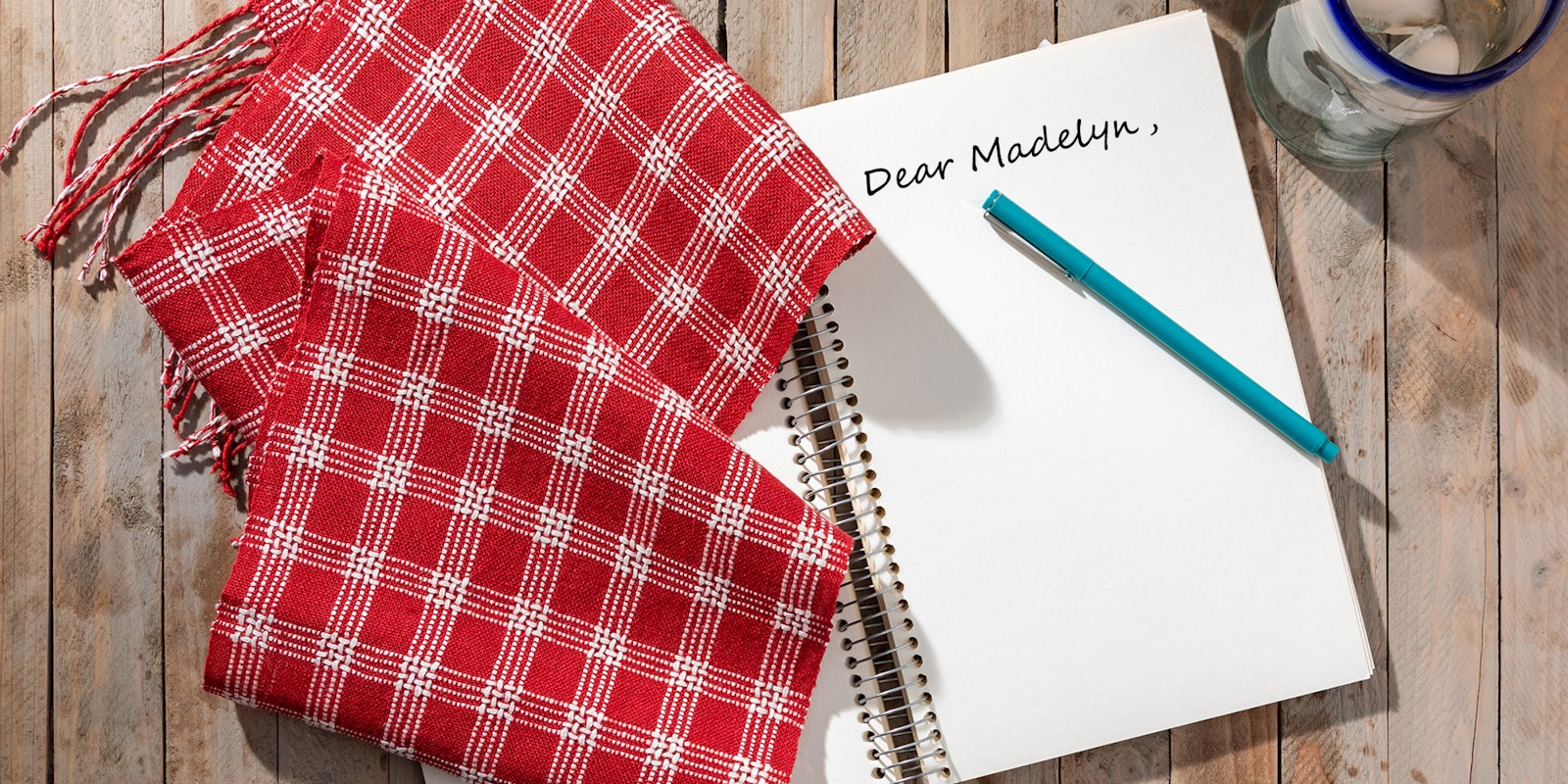Hi Madelyn,
I have a big problem. I am in the middle of a scarf, and the warp threads at the rear of the loom began to become twisted (a sticky bouclé that I warped back to front with 2 threads together in the cross). It got to the point that the twisting interfered with the raising of the sheds. I tried working the twists back toward the back beam, but they would only go so far. So my only option at that point was to unroll the warp from the warp beam and detangle the mess (I had to cut the ends to get the twists out). Any good ideas on how I can roll this warp (about 2 yards) back on the warp beam again so that I can finish off my scarf?
—Lois
Hi Lois!
I would position the loom so you can stretch the warp out for the full 2 yards. Then, I'd get someone to help you by holding a rod (same size as the apron rod) up firmly so that you can tie the ends of the warp to it, straightening and tensioning in very small groups, separating the threads individually. (To separate them, you can open a plain-weave shed and leave it open during the process.
Start at the center and separate each group of warp threads at the shafts so you really have the threads in their exact order (fingers between the individual ends). You might even figure out a way to tie the rod to some piece of furniture so it can be held steady for you (between chair uprights?). You won't have to tie the groups with firm tension onto the rod, just with as close to even tension as you can get. Then, you tie this rod to the apron rod and have someone crank the beam while you hold the rod under very firm tension and pack the warp layers with heavy paper.
Another option that might be easier, especially without a helper, is to wind the already woven cloth and the unwoven warp onto the cloth beam, packing the layers with paper (this packing is very important; you need to use very firm paper like corrugated cardboard that extends well beyond the edges of the warp) and tensioning it from the back of the loom as though you were beaming a warp, i.e, very evenly. Then, when your cut ends reach to a foot or so behind the shafts, tie them onto the apron rod of the warp beam so that the tension is even and firm, and then wind the unwoven warp onto the warp beam. It will be harder this way to start weaving again with no apparent irregularity between the new weaving and what you wove before.
When you do start weaving again using either method, I'd probably take out a few of the already woven picks and reweave carefully to match what is already there, adjusting gradually any irregularities that show up rather than have your first new pick come right after the last pick of the prior weaving.
Good luck! You can do this,
—Madelyn

